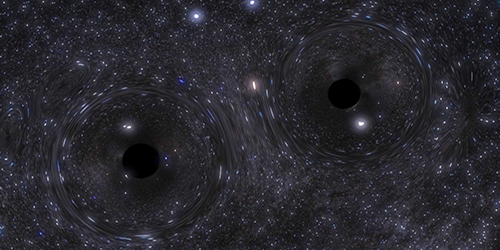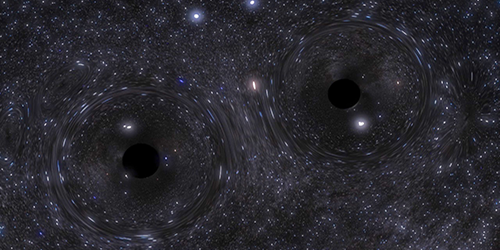Mind the Binaries
A pair of closely orbiting black holes will eventually collide and merge. Such mergers are expected to be one of the strongest sources of gravitational waves—ripples in the fabric of spacetime first predicted by Albert Einstein in 1916 but never observed directly. Carl Rodriguez from Northwestern University, Illinois, and colleagues now underscore the importance of a factory of binary black holes that is typically neglected in estimates of the frequency of these mergers: dense groups of stars, known as globular clusters, that orbit the core of their host galaxies. Their work indicates that such mergers may provide one of the most common signals to be detected by instruments such as the Advanced Laser Interferometer Gravitational Wave Observatory (Advanced LIGO), which is expected to start collecting its first data in the coming fall.
Rodriguez and co-workers calculated the incidence of mergers of binary black holes from globular clusters using detailed modeling of the dynamics of the merger process. Crucially, the model factored in the observed abundances and properties of globular clusters in the Milky Way and other galaxies. Taking into account the anticipated detection sensitivity of Advanced LIGO, the authors find that these stellar environments could generate about one hundred detectable binary black hole mergers per year—more than five times as many mergers as estimated by previous studies. Furthermore, they show that individual black holes in such binaries can be more massive than their counterparts formed from binary stars located outside globular clusters. This suggests that Advanced LIGO may be able to tease apart data originating from these two populations. Such distinction would provide information about the birthplaces and history of black holes in the local Universe.
This research is published in Physical Review Letters.
–Ana Lopes





